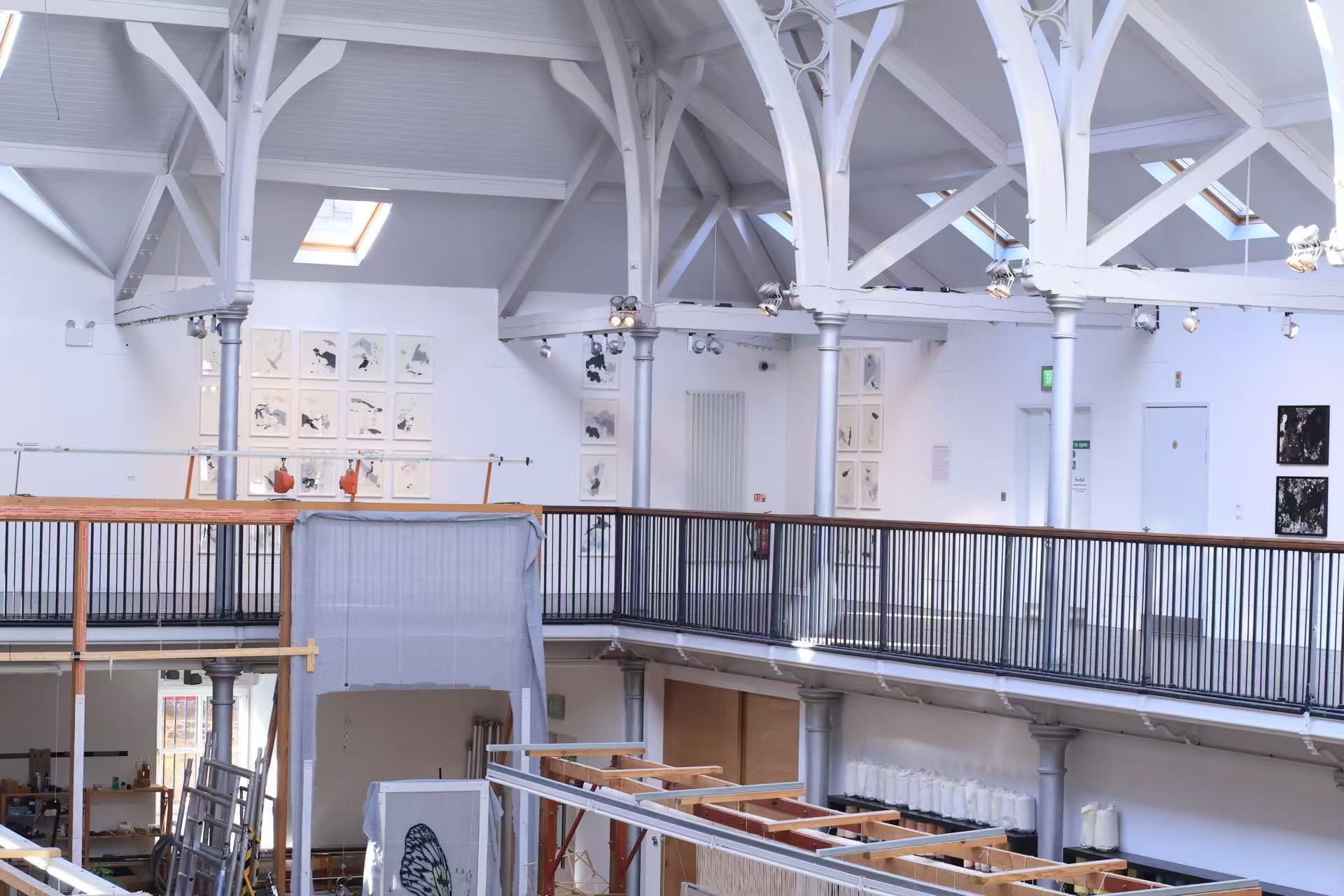Reflection on the Venue and Duration Change for ‘The Second Skin: Unstitched Narrative Threads’

Introduction
Curating an exhibition requires a careful balance between thematic coherence, audience engagement, and logistical feasibility. Initially, ‘The Second Skin: Unstitched Narrative Threads’ was envisioned as a 6-12 week exhibition, potentially hosted at Fruitmarket Gallery’s Project Space. However, after considering financial constraints, venue accessibility, and curatorial fit, I decided to relocate the exhibition to Dovecot Studios in Edinburgh and shorten the duration to 1-2 weeks. This blog post reflects on the rationale behind these changes, highlighting their impact on curatorial effectiveness and practical feasibility.
Why Dovecot Studios?
1. Alignment with Theme
Dovecot Studios, a historic tapestry and textile center, offers an ideal setting for an exhibition exploring the socio-political implications of fabric in shaping women’s identities. Given the exhibition’s focus on the power dynamics embedded in clothing—such as foot-binding shoes, corsetry, and contemporary textile-based feminist art—Dovecot’s textile heritage enhances the thematic depth of the show.
2. Accessibility and Audience Engagement
Unlike Fruitmarket Gallery’s Project Space, which caters primarily to contemporary art audiences, Dovecot Studios attracts a diverse demographic, including craft enthusiasts, fashion historians, and general visitors interested in textile arts. This diversity aligns with the exhibition’s goal of bridging historical narratives with contemporary feminist discourse.
3. Practical and Financial Considerations
Longer exhibition durations significantly increase costs, including venue rental, maintenance, and staffing. By opting for a 1-2 week exhibition with 2 days for installation and 2 days for dismantling, the budget becomes more manageable. This shorter timeframe also allows for a more concentrated promotional effort, creating a sense of urgency and exclusivity for visitors.
Space for a website:https://dovecotstudios.com/
Why a Shorter Exhibition Period?
1. Conceptual Impact
The ephemeral nature of a 1-2 week exhibition mirrors the transient yet powerful influence of clothing on identity formation. Just as fashion trends shift and societal norms evolve, the exhibition itself adopts an impermanent, dynamic presence within the gallery.
2. Audience Retention and Engagement
Extended exhibition periods risk visitor fatigue, whereas a condensed timeline encourages higher attendance within a limited timeframe. The shorter run also allows for more interactive, event-driven programming, such as artist talks, live performances, and participatory workshops.
3. Sustainable Exhibition Practices
By reducing the duration, the exhibition minimizes its environmental footprint, aligning with contemporary curatorial ethics that emphasize sustainability in art presentation (Bishop, 2012; Lind, 2018). Shorter exhibitions demand fewer resources in terms of energy consumption, installation materials, and long-term staffing.
Challenges and Mitigation Strategies
While relocating and shortening the exhibition has clear advantages, some challenges arise:
- Reduced exposure: A shorter duration means less time for organic audience growth. To counter this, I plan to leverage social media campaigns, targeted press outreach, and digital documentation to extend the exhibition’s impact beyond its physical presence.
- Logistical constraints: A tighter schedule requires efficient planning. A detailed timeline for installation, artwork transportation, and deinstallation ensures smooth execution within the given timeframe.
Conclusion
The decision to relocate ‘The Second Skin: Unstitched Narrative Threads’ to Dovecot Studios for a 1-2 week period is a strategic shift that enhances thematic alignment, audience engagement, and financial feasibility. By embracing ephemerality, the exhibition not only reflects the transient yet impactful nature of clothing but also aligns with sustainable curatorial practices. Moving forward, integrating digital extensions—such as online archives and virtual discussions—will further reinforce the exhibition’s curatorial narrative beyond its physical constraints.
Bibliography
Barber, John F. 2009. “Issues in Curating Contemporary Art and Performance Edited by Judith Rugg and Michèle Sedgwick. Intellect, Bristol, U.K., 2007. 184 Pp., Illus. ISBN: 978-1-84150-162-8.” Leonardo 42 (2): 167–68. https://doi.org/10.1162/leon.2009.42.2.167.
Bishop, Claire. 2013. “Artificial Hells: Participatory Art and the Politics of Spectatorship.” Choice Reviews Online 50 (08): 50–422450–4224. https://doi.org/10.5860/choice.50-4224.
Lind, Maria. 2019. “Selected Maria Lind Writing.” Sternberg Press. 2019. https://www.sternberg-press.com/product/selected-maria-lind-writing/.
Schneider, Rebecca. 2011. Performing Remains : Art and War in Times of Theatrical Reenactment. London: Routledge.




The peer-review is written in a professional tone with insightful references to both theory and practice. The entry that reflects on the meeting between MA CATS & CAPS is thoughtful and I enjoyed that you focused on the of work of 5 students. The contextual materials have improved during the last few blog posts. Good job! Also, there are more entries that demonstrate engagement with the collective; the planned activities indicate motivation and seem fun and interesting. A relationship is beginning to form between curatorial themes, critical theory, and the collective’s shared interest. The research process for your ICP is coming along well!